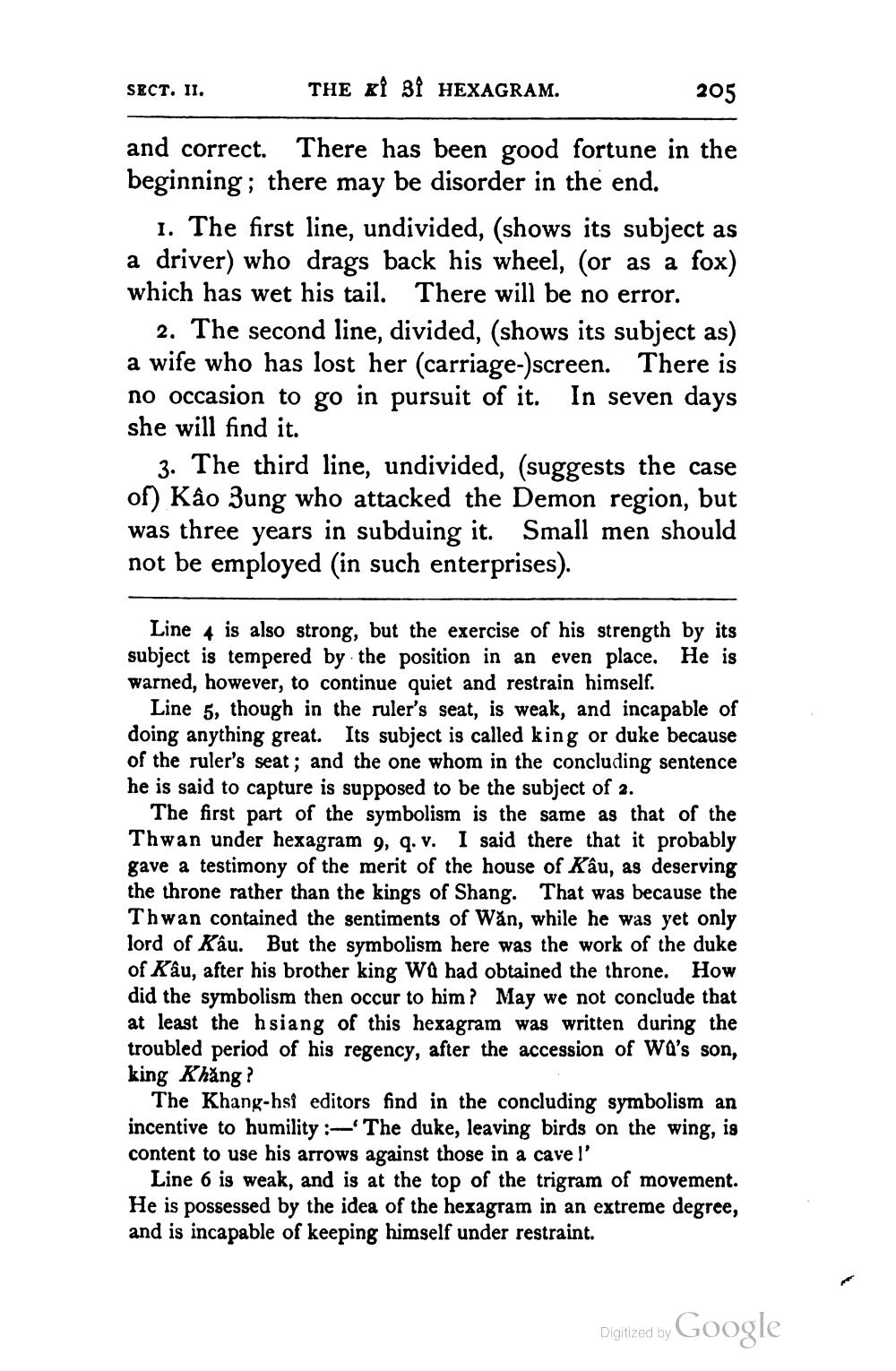________________
SECT. II.
THE Kť 3HEXAGRAM.
205
and correct. There has been good fortune in the beginning; there may be disorder in the end.
1. The first line, undivided, (shows its subject as a driver) who drags back his wheel, (or as a fox) which has wet his tail. There will be no error.
2. The second line, divided, (shows its subject as) a wife who has lost her (carriage-)screen. There is no occasion to go in pursuit of it. In seven days she will find it.
3. The third line, undivided, (suggests the case of) Kâo Zung who attacked the Demon region, but was three years in subduing it. Small men should not be employed in such enterprises).
Line 4 is also strong, but the exercise of his strength by its subject is tempered by the position in an even place. He is warned, however, to continue quiet and restrain himself.
Line 5, though in the ruler's seat, is weak, and incapable of doing anything great. Its subject is called king or duke because of the ruler's seat; and the one whom in the concluding sentence he is said to capture is supposed to be the subject of 2.
The first part of the symbolism is the same as that of the Thwan under hexagram 9, 9. v. I said there that it probably gave a testimony of the merit of the house of Kâu, as deserving the throne rather than the kings of Shang. That was because the Thwan contained the sentiments of Wăn, while he was yet only lord of Kâu. But the symbolism here was the work of the duke of Kâu, after his brother king Wu had obtained the throne. How did the symbolism then occur to him? May we not conclude that at least the hsiang of this hexagram was written during the troubled period of his regency, after the accession of Wa's son, king Khăng?
The Khang-hsi editors find in the concluding symbolism an incentive to humility :-- The duke, leaving birds on the wing, is content to use his arrows against those in a cave l'
Line 6 is weak, and is at the top of the trigram of movement. He is possessed by the idea of the hexagram in an extreme degree, and is incapable of keeping himself under restraint.
Digitized by Google




